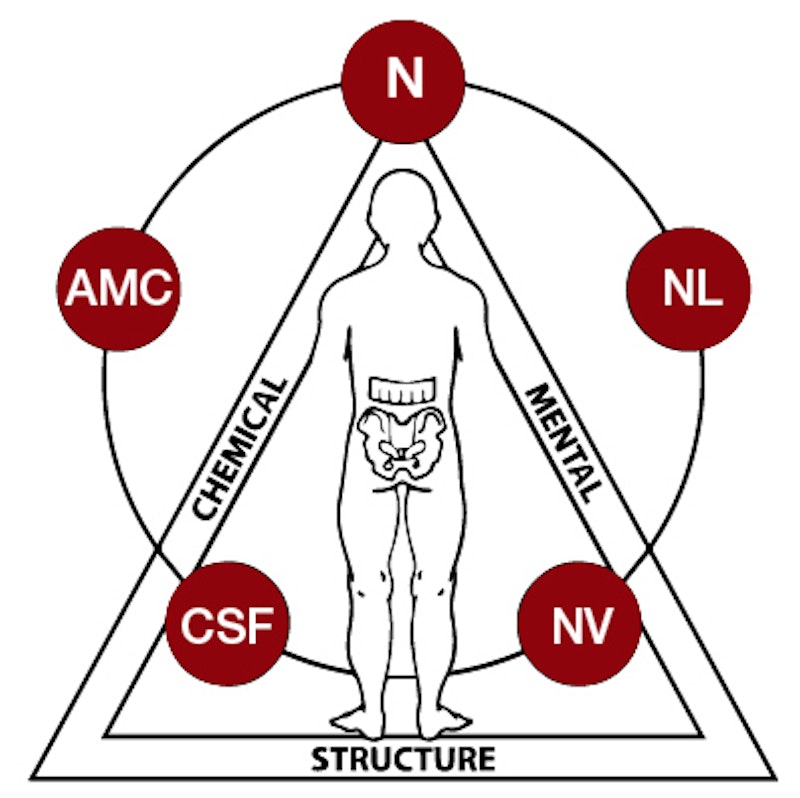My father was experiencing pain in the middle and index fingers of his right hand. His doctor said it was probably arthritis and recommended Tylenol and hot and cold compresses. He followed instructions but the pain grew worse until he couldn’t bend his fingers. He went to a hand specialist. Tests were negative and the diagnosis was the same: arthritic joints due to aging.
I suggested my dad visit an applied kinesiologist. I’d been seeing an applied kinesiologist for minor ailments like headaches and allergies. My father was resistant. He was a traditionalist committed to western medicine and viewed alternative healing modes as quackery. I offered to pay the $150 fee and take him to lunch afterwards at his favorite deli. He agreed.
The session lasted 45 minutes. My father was on a massage table while the kinesiologist put him through a regimen of diagnostic muscle testing. Muscle testing involves touching neurological points on the body (similar to acupuncture points) and asking the patient to resist pressure pushing down on the arm. Each neurological point links to a specific organ or system in the body. If the patient can resist the arm pressure, the organ or system is strong. If they can’t resist, this indicates a problem or energy blockage. An applied kinesiologist perceives the patient’s energy pathways (called “meridians” in Chinese Medicine) to search for imbalances. Muscle testing yields causes of imbalance and options for treatment.
In my father’s case, he exhibited weakness in his peripheral nervous system. The applied kinesiologist put several vials of known pollutants on his abdomen and my father’s arm yielded to pressure. The applied kinesiologist diagnosed a case of lead poisoning. Further muscle testing yielded a likely cause of diet and tap water. (My dad eats a lot of fish, a known source of lead and he makes his coffee with tap water.) The practitioner recommended zinc and a chemical detox supplement as an effective way to remove lead from my dad’s body.
Afterwards, my father was dubious of the encounter. “All the guy did was touch different places on my chest. What the hell was that?” I told him to take the supplements and see what happens. A week later, dad left an excited voicemail message. “My finger pain is gone. I don’t what that witch doctor did, but it worked.”
Over the years I’ve recommended applied kinesiology to friends. This included a neighbor who broke out in a rash every time she lied in the sun. The applied kinesiologist diagnosed intestinal parasites and prescribed black walnut and an herb called wormwood. My friend’s rash vanished and she declared herself a “reborn sun worshipper.” Another friend experienced tingling in her wrists and feared she had carpal tunnel syndrome. The applied kinesiologist concluded she had metal fillings in her teeth that were leaching mercury into her system. My friend had her metal fillings replaced with resin composite fillings. The tingling in her arms immediately went away.
The concept of applied kinesiology was developed by Michigan chiropractor George Goodheart in the early 1960s. He taught other chiropractors and in 1976 the “International College of Applied Kinesiology” (ICAK) was born. The practice is used primarily by chiropractors though practitioners of all modes of medicine now use muscle testing as a means of diagnosis. The practice of applied kinesiology is taught and regulated by ICAK.
Criticism of applied kinesiology is common. The American Academy of Allergy, Asthma and Immunology states the practice has “no evidence of diagnostic validity.” The American Cancer Society adds, “scientific evidence does not support the claim that applied kinesiology can diagnose or treat cancer or other illness.” The primary criticism is that applied kinesiology relies on the subjective assessment of muscle response by the practitioner. Most traditional doctors view applied kinesiology as quackery, though some alternative doctors like Andrew Weil see validity in the method.
A few months ago my friend experienced pain around his solar plexus. His doctor gave him a series of tests (blood and urine, cat scan, x-rays). He was given a clean bill of health but the abdominal pain remained. I directed him to my applied kinesiologist where my friend learned he had a hiatal hernia caused by an inability to digest fats and protein. The applied kinesiologist used chiropractic methods to reset my friend’s ileocecal valve then prescribed digestive enzymes to be taken before meals. Four days later my friend’s abdominal pain went away. Applied Kinesiology might be viewed as magical thinking but I remain a believer.

